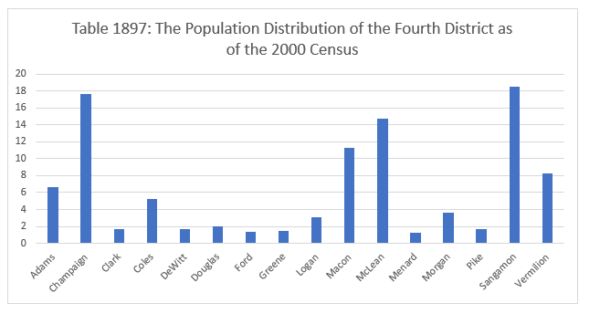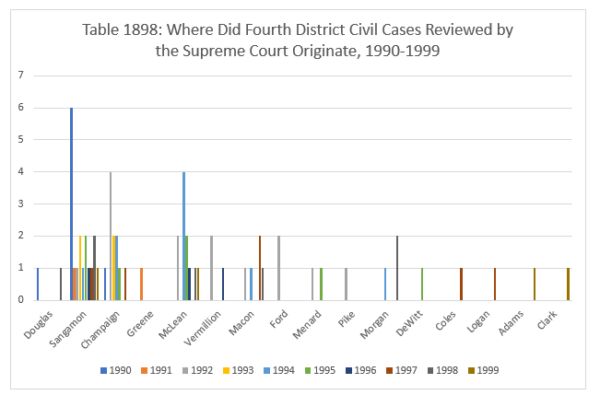- within Insolvency/Bankruptcy/Re-Structuring topic(s)
This time, we're reviewing the geographic distribution of civil cases from the Fourth District during the 1990s.
The Fourth District has the largest number of counties of the three Districts we've reviewed so far – sixteen during this decade – but the lowest population, 440,000 less than the Third District and more than one and three quarters million less than the Second. The population is also a bit more distributed. Four counties have more than ten percent of the Fourth's total population: Sangamon (18.53%), Champaign (17.62%), McLean (14.75%) and Macon counties (11.25%). Vermilion County has 8.23% of the population, Adams has 6.7% and Coles County – where my family lived for four years during the Civil War – accounted for 5.22%. After that, the remaining counties are all quite small.

In looking at the case distribution, we have to keep in mind that Sangamon County is the home of the state capital, which is bound to affect the caseloads. For the decade, only Sangamon had cases in every year, producing 18 in all. Champaign and McLean County accounted for 11 cases apiece. After that, a steep drop-off to Macon County with five cases and Vermilion and Morgan counties with three. Three more counties had two cases apiece and four counties produced one case apiece.

Next time: the Fifth District data.
The content of this article is intended to provide a general guide to the subject matter. Specialist advice should be sought about your specific circumstances.

